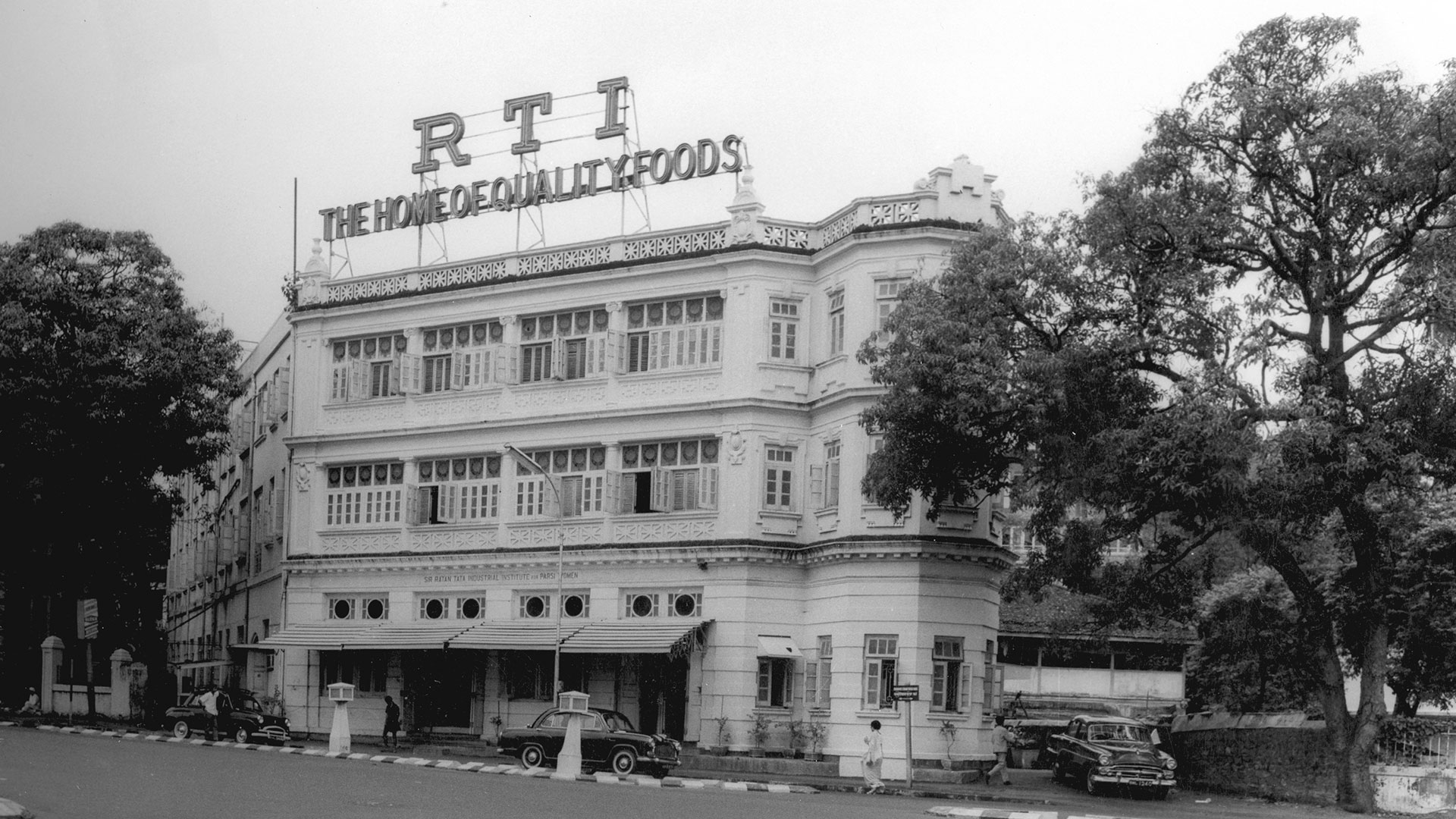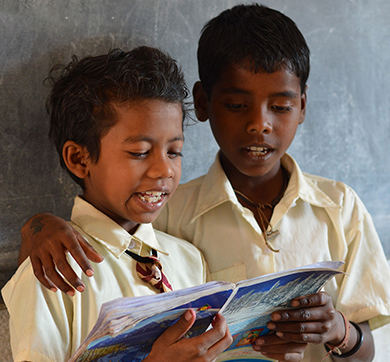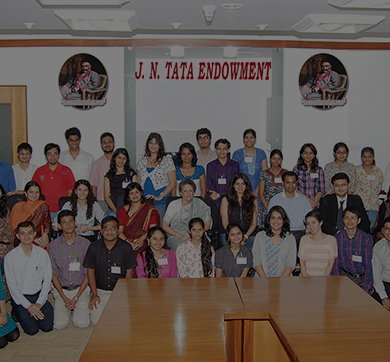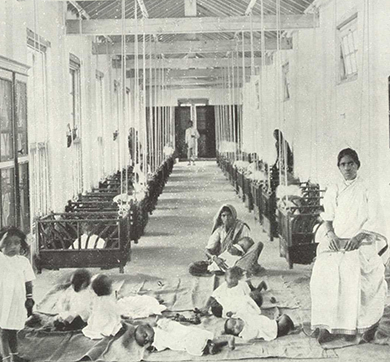June 2018 | 1070 words | 4-minute read
As you drive down the bustling Hughes Road in Mumbai, you cannot help but notice the large white ‘RTI’ lettering on the façade of this unassuming building.
If you are from the city, you probably know of it as a go-to place to indulge any cravings for Parsi cuisine that finds its influence from Iran. But it is so much more than that. The Sir Ratan Tata Institute (RTI) has stood in that same spot, quietly changing lives, for 90 years.
RTI, the brainchild of Lady Navajbai Tata, was established in April 1928 as a tribute to her philanthropist husband Sir Ratan Tata, the second son of the Tata group Founder Jamsetji Tata. She donated the building to Stri Zarthosti Mandal, which was an organisation founded in 1903 for destitute Parsi women whose families were affected by the bubonic plague of 1896.
The Mandal needed funds for the purchase of a building that could accommodate more women. Lady Navajbai fulfilled this need by making a philanthropic donation of a building that would serve as a dedicated training and production centre for destitute Parsi women, thereby helping them earn a livelihood and become self-reliant.
The women were employed in the cookery, hand embroidery, tailoring and laundry divisions — all of which exist to this day.
In 1937, Lady Navajbai donated another building — the annex located across the road — to accommodate the newly set up machine embroidery and hand weaving departments. A new confectionery division was also added to the kitchen and food outlet in the original building.
Lady Navajbai’s legacy was carried forward by her son Naval Tata and later by his wife Simone Tata, who started the children’s garment and lingerie sections at RTI. Although now retired, Simone Tata continues to take a keen interest in the affairs of the institute.
Jamva Chalo Ji!
In the tranquil quarters of the main building is a busy team that runs the flagship RTI kitchen and outlet that supplies food to six stores across the city and to hundreds of RTI loyalists who avail the famous tiffin lunch that is delivered by uniformed RTI staff in RTI vans.
The aroma of freshly baked cookies wafts out of the confectionery as we walk towards the kitchen. It is said that Sheramai Tata, a cousin and sister-in-law of late Naval Tata, who was trained by Swiss pastry chefs and took over as the head of the confectionary department, trained the RTI chefs to make a variety of cakes, including the delicately layered mille-feuille, a classic French dessert.
The RTI kitchen, known for its authentic Parsi sweets like dar ni pori, khajur ni ghari, khaman na ladoo among others, is one-of-akind in the country. Even in today’s evolved gourmet times, nothing quite compares with RTI’s succulent mutton cutlets, the crispy cheese straws and the rich chocolate cake.
RTI has also evolved with the times, and is now listed with food aggregators like Zomato.
Fashioning Elegance With Care
Across the street, stands the RTI annex with two eye-catching display windows belonging to the hand-stitched apparel boutiques Hers, for women’s apparel, and Bambino, for children’s clothing. The cars still fl ocking to the biannual sales at these stores is proof of the enduring appreciation of the RTI clothing brands.
On the top floor here is the embroidery unit, where embroiderers work painstakingly on creating saris with sequin work, shadow work, cut work, applique work and gara embroidery, all RTI’s forte. Each handcrafted gara masterpiece takes several months to a year to complete and fetches a premium price of almost $3,000, depending on the intricacy of the design.
The embroidery division also undertakes restoration of gara heirlooms, carefully transferring the embroideries on to new fabrics.
“It all started in the 1960s when women hailing from reputed Parsi families, impressed by the quality and fi nish of our work, approached us to save their family heirlooms which were either frayed or stained. Perin Gobhai, who was an honorary member of RTI, set up this service. We are the only institute in the country that restores garas,” says Dhanoo Khusrokhan, vice president, RTI.
Pioneering The Montessori
The first floor of the RTI annex is abuzz with toddlers. It is the home of the RTI Montessori school. Adjacent to this is the RTI Montessori Training Centre, one of only four in India, which imparts teacher training based on the philosophy of Dr Maria Montessori, Italy’s fi rst woman physician and the founder of the Montessori method of education.
RTI also helps young women who have fi nished their Montessori Teacher’s Training course in setting up their own Montessori schools.
Hitting A Century
RTI lives by its founder’s philosophy, existing for people of all faiths, castes, colours and creed. Its doors have always been open to the diff erently abled as well. It exists to employ those deemed unemployable by mainstream society.
The institute has lived up to its promise of providing a meaningful existence to needy women by training and employing them, thus discouraging the practice of charity in the form of doles. The income generated from the institute has been used for the fi nancial security and social benefi ts of its workers and their children, which includes housing, meals, educational and medical expenses.
It has not only given a new lease of life to hundreds of women and families but also forged lifelong associations.
“Rati Patwa and Maneck Pithawalla from the catering division and Roshan Davar from the embroidery section are our oldest serving members,” says Zenobia Adajania, who has been part of the institute since 1965 and is the oldest committee member. “They joined RTI as young trainees staying at the hostel, and today they are heads of departments and grandmothers. It is very gratifying to see them continue in the service of RTI, with such enthusiasm and love.”
RTI is now geared up for the next decade of meaningful work to complete a century of making a diff erence. “We plan on doing much more by introducing new products, innovating to be more relevant, especially with the changing fashion trends, and selling more so that we can improve our revenues and be profi table and positively impact the lives of more women and children,” says Kamal Pandole, president, RTI.
—Farah Dada













